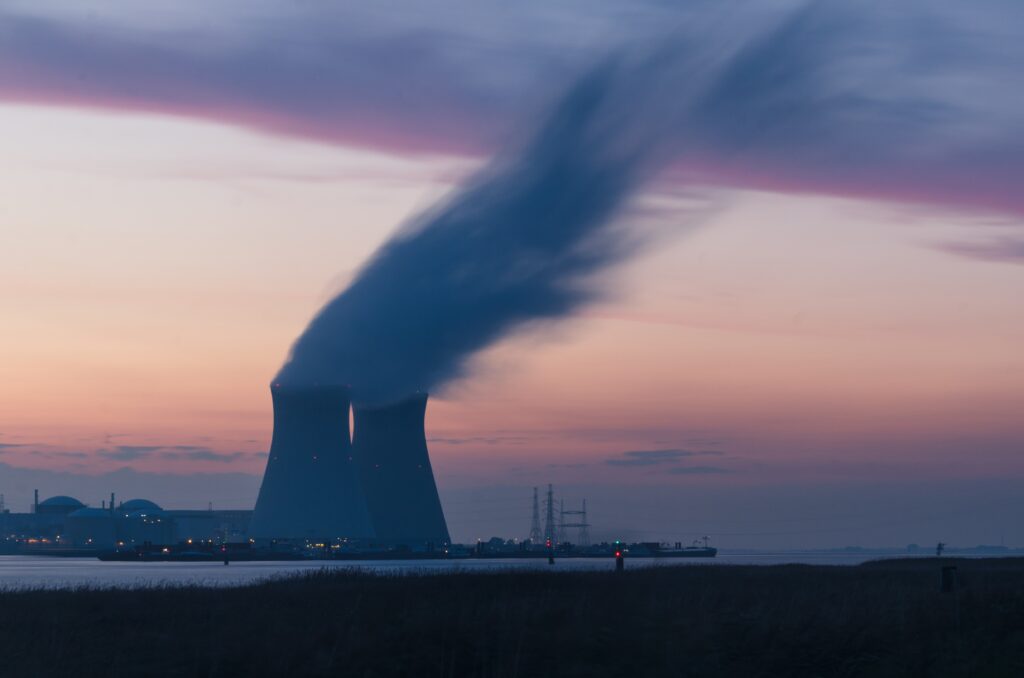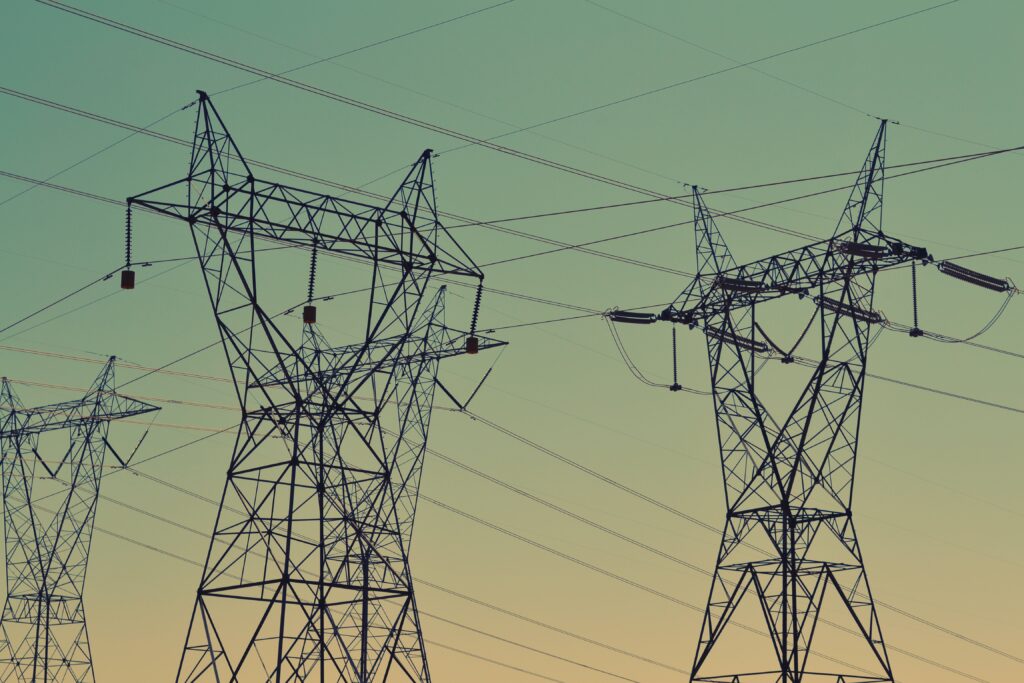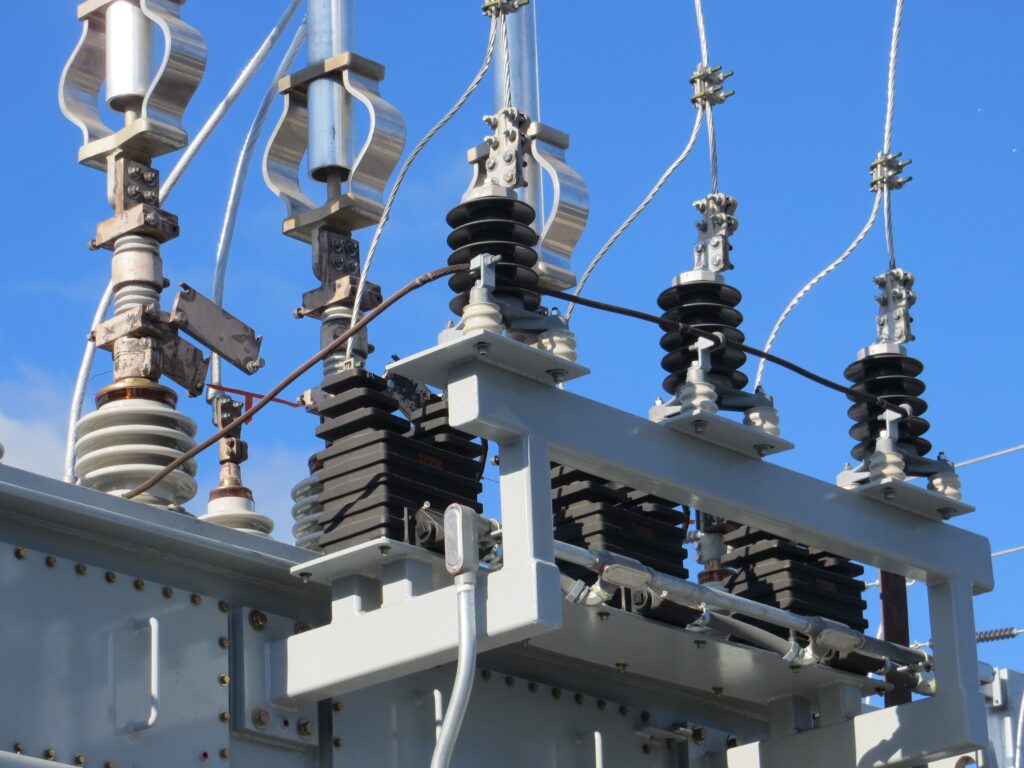Are you curious to discover the most cost-effective source of energy? Look no further, because in this article we will reveal the answer to the age-old question: What is the cheapest form of energy? Get ready to explore the world of energy options, from traditional to renewable, and uncover the most affordable solution to power our modern lives. So, grab a cup of coffee and let’s embark on this exciting journey together!

Understanding Energy Economics
Energy economics refers to the study of the production, consumption, and distribution of energy, along with the impact of various factors on energy prices and market trends. By delving into the basic principles of energy economics, we can gain a better understanding of the dynamics that shape the energy sector.
Basic principles of energy economics
At its core, energy economics is based on the fundamental principles of supply and demand. The availability of energy resources, such as solar, wind, hydroelectric, natural gas, nuclear, and coal, largely determines the supply of energy in a given market. On the other hand, the demand for energy is influenced by factors such as population growth, economic development, technological advancements, and lifestyle choices.
The interaction between supply and demand in the energy market leads to the determination of energy prices. When the supply of energy exceeds demand, prices tend to decrease, making energy more affordable. Conversely, if demand surpasses supply, energy prices rise. Understanding these basic principles is crucial for comprehending the factors that affect energy costs.
Factors affecting energy prices
A multitude of factors can influence energy prices, making it important to examine and understand them. The cost of production and distribution, including labor, raw materials, equipment, and transportation, plays a significant role in determining the price of energy. Additionally, geopolitical factors, such as instability in oil-producing regions or conflicts affecting natural resource availability, can impact energy prices.
Furthermore, technological advancements and innovations in energy production methods, such as more efficient solar panels or wind turbines, can drive down costs and make certain energy sources more affordable. Market competition, government policies, subsidies, taxes, and regulations also contribute to shaping energy prices. By comprehending these factors, we can gain insights into the dynamics of energy economics.
Market trends and energy costs
Market trends in energy economics are constantly evolving, reflecting changes in supply and demand dynamics, technological developments, and shifts in consumer preferences. Over the past decade, there has been a notable shift towards renewable energy sources, such as solar, wind, and hydroelectric power, driven by concerns over climate change and the need for sustainable energy solutions.
These market trends have led to Decreasing costs in renewable energy technologies. Solar energy, for instance, has experienced a significant decline in costs over the years due to advancements in solar panel technology and increased economies of scale. Similarly, wind energy costs have become more competitive as wind turbine technologies have improved.
However, it is important to note that traditional energy sources, such as natural gas, nuclear, and coal, still play a significant role in the global energy mix. The costs associated with these sources are influenced by factors such as resource availability, geopolitical considerations, and advancements in extraction and generation technologies.
Solar Energy
Solar energy, derived from harnessing the power of the sun, has gained considerable attention as a renewable and sustainable energy source. Understanding the process and cost of solar energy is essential for evaluating its viability as an alternative to other forms of energy generation.
The process and cost of solar energy
Solar energy is generated through the use of photovoltaic (PV) cells that convert sunlight into electricity. These cells, typically made of silicon, capture photons from sunlight and cause electrons to flow, thereby generating an electrical current. The electricity produced can be utilized directly or stored in batteries for later use.
The cost of solar energy has witnessed a significant decrease in recent years, primarily due to technological advancements and an increase in production scale. Improved manufacturing techniques, economies of scale, and efficiency gains have led to cost reductions in solar panels. Additionally, government incentives and subsidies have made solar energy more financially attractive, further driving down costs.
Benefits and challenges of solar energy
Solar energy offers numerous benefits that make it an attractive option for both individual consumers and large-scale installations. One of the key advantages of solar energy is its renewable nature. As long as the sun shines, Solar energy can be harnessed, providing a virtually limitless supply of electricity. Solar energy also produces no greenhouse gas emissions, making it a clean energy source that helps combat climate change.
Furthermore, solar energy systems can be installed on rooftops or open fields, making them highly versatile and adaptable to various locations and space constraints. Solar panels also require minimal maintenance, which can lead to lower operational costs over time.
However, solar energy also faces certain challenges that need to be addressed for widespread adoption. The intermittent nature of sunlight and the need for energy storage systems to ensure continuous power supply pose challenges for solar energy. Additionally, the initial investment costs of installing solar energy systems can be high, although they are generally offset by long-term energy savings.
Regional factors affecting solar energy costs
The costs associated with solar energy can vary significantly depending on regional factors. The geographic location determines the amount of sunlight received, which impacts the efficiency and productivity of solar panels. Areas with high solar irradiation, such as deserts or regions closer to the equator, tend to have more favorable conditions for solar energy generation.
Moreover, local policies, regulations, and incentive programs can affect the cost of solar energy. Subsidies, tax credits, and net metering policies, which allow consumers to sell excess solar energy back to the grid, can make solar energy more financially appealing. Conversely, the absence of supportive policies or high installation costs can hinder the adoption of solar energy in certain regions.
Future prospects of solar energy
As technology continues to advance and economies of scale are achieved, it is expected that solar energy will become an increasingly prominent and affordable energy source. Continued research and development efforts are focused on improving photovoltaic cell efficiency, reducing manufacturing costs, and developing more efficient energy storage solutions.
The integration of solar energy into the existing energy grid and the establishment of microgrids, which allow localized energy generation and distribution, will further enhance the viability of solar energy. With decreasing costs, increasing environmental awareness, and governmental support, solar energy is poised to play a crucial role in our future energy mix.
Wind Energy
Harnessing the power of wind, wind energy has become increasingly popular as a renewable and sustainable source of electricity. Understanding wind energy and its costs is essential in evaluating its potential as a viable energy source.
Understanding wind energy and its costs
Wind energy is obtained by converting the kinetic energy of wind into electrical energy. Wind turbines, fitted with large blades, capture the wind’s energy and rotate a generator to produce electricity. The cost of wind energy primarily comprises the initial investment in wind turbines and associated infrastructure, maintenance costs, and transmission and distribution expenses.
Over the past decade, advancements in wind turbine technology and increased production capacity have led to significant cost reductions in the wind energy sector. The size and design of wind turbines, along with improvements in aerodynamics and materials used, have resulted in increased energy capture and improved efficiency. These advancements have made wind energy more cost-competitive with traditional energy sources.
Advantages and drawbacks of wind energy
Wind energy offers several advantages that contribute to its growing popularity. Firstly, wind is an abundant and renewable resource, making wind energy a sustainable solution for electricity generation. Unlike fossil fuels, wind energy production does not produce greenhouse gas emissions or polluting byproducts.
Another advantage of wind energy is its potential for decentralized power generation. Wind farms can be established in various locations, including rural areas, providing economic opportunities and promoting energy independence. Additionally, wind energy can create jobs in manufacturing, installation, and maintenance.
Despite its advantages, wind energy faces certain challenges and drawbacks. The intermittent nature of wind, which can lead to fluctuations in electricity production, requires the presence of backup power sources or energy storage systems to ensure a reliable energy supply. Furthermore, wind turbines can be visually imposing and may face local opposition due to concerns over noise pollution, impact on wildlife, or aesthetic considerations.
Influence of geography on wind energy costs
Geographical factors significantly impact the cost of wind energy. The availability and consistency of wind resources vary across regions, and areas with higher wind speeds and longer durations are more favorable for wind energy installation. Coastal regions and open plains are often considered ideal locations for wind farms due to their exposure to strong and consistent winds.
Moreover, the distance between the wind farm and existing energy infrastructure affects the transmission and distribution costs. Remote wind farms may require additional investments in transmission lines and grid infrastructure, increasing overall costs. Regional policies, such as financial incentives, feed-in tariffs, or tax credits, can also impact the cost of wind energy.
The future of wind energy
The future of wind energy looks promising, as it continues to grow as a viable energy source. Rapid advancements in wind turbine technology are increasing energy capture and efficiency while reducing manufacturing and installation costs. Additionally, ongoing research focuses on developing offshore wind farms and implementing floating wind turbines, offering the potential for higher energy yields and reducing conflicts with land use.
Furthermore, advancements in energy storage technologies and the integration of wind energy into the existing energy grid are vital for its long-term viability. As wind power becomes more prevalent, grid infrastructure must be updated to accommodate the intermittent nature of wind energy and ensure a stable and reliable supply. Continued investment, research, and government support will play a crucial role in shaping the future of wind energy.
Hydroelectric Energy
Harnessing the power of flowing water, hydroelectric energy has been widely utilized as a reliable and renewable source of electricity. Understanding how hydroelectric energy works, along with its cost factors and pros and cons, is crucial for evaluating its place in the energy sector.
How hydroelectric energy works
Hydroelectric energy is generated by the flow of water through turbines, which are connected to generators. Gravity propels water through the turbines, causing them to rotate and produce electricity. Hydroelectric power plants typically rely on dams to create reservoirs, ensuring a sufficient supply of water for power generation.
The cost of hydroelectric energy primarily includes the construction and maintenance of dams, turbines, and powerhouses, as well as transmission and distribution infrastructure. While initial construction costs can be substantial, hydroelectric power plants have low operational costs and a long lifespan, making them economically viable in the long run.
Cost factors in hydroelectric energy
The cost of hydroelectric energy is influenced by several factors, including the geography and topography of the area where the power plant is located. Proximity to water sources with a consistent flow and suitable elevation differences, such as rivers or waterfalls, is essential for harnessing hydroelectric power efficiently.
Additionally, large-scale hydroelectric projects, such as those involving dam construction, involve significant upfront investments. The construction of dams, reservoirs, and associated infrastructure can be costly, requiring careful evaluation of potential benefits and impacts. Operating and maintenance costs, including expenses for dam inspections, sediment removal, and equipment upkeep, also contribute to the overall cost of hydroelectric energy.
Pros and cons of hydroelectric energy
Hydroelectric energy offers several advantages that make it a preferred choice for countries and regions with adequate water resources. Firstly, hydroelectric power plants are environmentally friendly, producing no greenhouse gas emissions or air pollutants during operation. Unlike fossil fuel-based power generation, hydroelectric energy does not contribute to climate change or air pollution.
Another advantage of hydroelectric energy is its reliability and capacity for base-load power generation. Hydroelectric power plants can provide a stable and continuous supply of electricity, serving as a reliable energy source. Additionally, the presence of reservoirs created by dams can provide water for irrigation, domestic use, and recreational activities.
However, there are also drawbacks associated with hydroelectric energy. The construction of large dams can have significant environmental impacts, including habitat destruction, altered river ecosystems, and displacement of communities. Furthermore, hydroelectric power generation can be affected by seasonal variations in water flow, climate change, and potential risks of dam failure.
Geographical impact on hydroelectric energy costs
Geographical factors play a pivotal role in determining the cost of hydroelectric energy. The availability of suitable sites with high rainfall, large rivers, or elevation differences affects the feasibility and cost-effectiveness of hydroelectric power plant construction. Remote locations or areas distant from existing transmission infrastructure may require additional investments in transmission lines, increasing overall costs.
Furthermore, government policies, regulations, and permitting processes can influence the cost of hydroelectric energy. Environmental impact assessments, compliance with water management regulations, and mitigation measures can add to the overall project costs. Financial incentives, tax credits, or grants provided by governments can help alleviate some of the initial investment costs.
Hydroelectric energy and the future
Hydroelectric energy will continue to be a significant part of the global energy mix, contributing to a sustainable and renewable energy future. The construction of smaller-scale hydroelectric projects, such as run-of-river installations, can minimize environmental impacts while harnessing the power of flowing water. Improved technologies, including fish-friendly turbines and innovative fish passage systems, aim to reduce the ecological consequences associated with hydroelectric power plants.
Additionally, the integration of hydroelectric power with other renewable energy sources and the development of energy storage technologies will help address the challenge of intermittency and variability. Enhanced grid infrastructure and interconnection systems can promote the efficient utilization of hydroelectric energy and its seamless integration into the electricity grid. As the need for clean and reliable energy grows, hydroelectric power will play a crucial role in meeting energy demands sustainably.

Natural Gas
Natural gas, a fossil fuel, has become an important source of energy in many countries due to its abundance, versatility, and relatively low emissions compared to coal and oil. Understanding the basics of natural gas energy, its economics, advantages, and disadvantages, provides insights into how it fits into the energy landscape.
Understanding natural gas energy
Natural gas is a hydrocarbon gas mixture primarily composed of methane. It is extracted from underground reservoirs through drilling and hydraulic fracturing, or fracking, processes. Once extracted, natural gas can be transported through pipelines or liquefied for shipment as liquefied natural gas (LNG) to locations without pipeline infrastructure.
Natural gas can be used for various purposes, including electricity generation, heating, cooking, and industrial applications. It is known for its high energy density, making it an efficient fuel source. The combustion of natural gas produces fewer emissions of pollutants and greenhouse gases compared to other fossil fuels, making it a comparatively cleaner energy option.
The economics of natural gas
The cost of natural gas is influenced by several economic factors, including supply and demand dynamics, exploration and extraction costs, transportation and distribution expenses, and infrastructure investments. The availability and proximity of natural gas reserves affect extraction costs, with reserves located in remote or challenging geographic conditions often requiring additional investments.
Market forces, geopolitical considerations, and weather patterns also impact natural gas prices. Supply disruptions, shifts in demand, or changes in trade agreements can lead to fluctuations in natural gas prices. Weather conditions, such as colder winters, can drive up demand for natural gas, affecting its price.
Advantages and disadvantages of natural gas energy
Natural gas energy offers several advantages that contribute to its popularity as a fuel source. Firstly, natural gas is abundant and widely available in many regions, contributing to energy security and reducing dependency on imports. The versatility of natural gas, which can be used for power generation, heating, industrial processes, and transportation, makes it a versatile energy source.
Compared to coal and oil, natural gas combustion produces lower emissions of pollutants, such as sulfur dioxide, nitrogen oxide, and particulate matter. Furthermore, natural gas power plants are more efficient than traditional coal-fired power plants, resulting in lower carbon dioxide emissions per unit of electricity generated. This has positioned natural gas as a transition fuel towards cleaner energy sources.
However, natural gas energy is not without its drawbacks. Methane, the primary component of natural gas, is a potent greenhouse gas that contributes to climate change. Methane leaks during extraction, transportation, and distribution processes can offset its lower emissions advantage and contribute to overall greenhouse gas emissions. Additionally, the extraction method of hydraulic fracturing has raised concerns about water contamination and seismic activity.
Impact of geography on natural gas costs
Geographical factors considerably affect the costs associated with natural gas. The location and accessibility of natural gas reserves impact extraction costs and determine the feasibility of production. Remote or offshore reserves often require additional investments in infrastructure, including pipelines or LNG terminals, to transport and distribute natural gas to end-users.
Geopolitical factors can also influence natural gas costs. Political instability in gas-producing regions, conflicts, or trade disruptions can impact the availability and pricing of natural gas. Additionally, the proximity to existing pipeline networks or LNG terminals can affect the transportation and distribution costs of natural gas.
The future of natural gas energy
The future outlook for natural gas energy is shaped by various factors such as environmental concerns, technological advancements, and the transition towards cleaner and renewable energy sources. While natural gas has been considered a cleaner alternative to coal and oil, the sector faces increasing scrutiny due to methane emissions and its contribution to climate change.
The continued development and implementation of technologies that minimize methane leakage and improve extraction methods will be crucial for the future of natural gas energy. Additionally, advancements in carbon capture and storage technologies can help mitigate the environmental impact of natural gas use. A transition towards renewable natural gas, derived from organic waste materials, can also contribute to a more sustainable natural gas sector.
As the global energy landscape evolves, natural gas is expected to play a transitional role, working alongside renewable energy sources to meet growing energy demands. The flexibility and reliability of natural gas, coupled with advancements in infrastructure and supply chain management, will continue to position it as an essential component of the energy mix.
Nuclear Energy
Nuclear energy, harnessed through nuclear fission, has the potential to provide high-density, low-carbon electricity. Understanding nuclear energy, its cost elements, advantages, and drawbacks is essential for evaluating its role in the energy sector.
Nuclear energy explained
Nuclear energy is generated through the process of nuclear fission, in which the nucleus of an atom is split, releasing a significant amount of energy. This energy is utilized to generate heat, which is then converted into electricity through steam turbines and generators.
Nuclear power plants require a significant initial investment for construction, operation, and decommissioning. These costs comprise the major component of nuclear energy economics. Additionally, considerations such as fuel acquisition, waste management, and safety measures contribute to the overall cost of nuclear energy.
Cost elements of nuclear energy
The cost of nuclear energy includes various components, ranging from construction and operational expenses to fuel and waste management costs. The initial investment required for the construction of a nuclear power plant is substantial due to the complexity and safety considerations involved.
Operational costs include expenses associated with maintenance, personnel, and licensing. Nuclear power plants require highly skilled technicians, rigorous safety protocols, and ongoing maintenance to ensure safe and reliable operation. Additionally, decommissioning costs, which cover the dismantling and decontamination of the plant at the end of its lifecycle, should also be considered.
Fuel costs represent a significant component of nuclear energy economics. Although nuclear fuel is relatively inexpensive compared to other energy sources, the costs associated with uranium mining, enrichment, and disposal of spent fuel can affect the overall economics of nuclear power generation.
Pros and cons of nuclear energy
Nuclear energy offers several advantages that make it an attractive option for electricity generation. Firstly, nuclear power plants produce large amounts of electricity with minimal greenhouse gas emissions, helping to mitigate climate change. Nuclear power is considered a low-carbon energy source, making it a potentially important contributor to decarbonizing the electricity sector.
Another advantage of nuclear energy is its high energy density, meaning small amounts of fuel can generate significant amounts of electricity. This efficiency reduces the reliance on fuel transportation and associated costs compared to other energy sources. Additionally, nuclear power plants can provide a stable and continuous supply of electricity, providing a reliable source of baseload power.
However, nuclear energy also presents challenges and concerns. The management and disposal of radioactive waste generated by nuclear power plants require long-term storage solutions and strict safety protocols. Storage and security of spent fuel raise potential environmental and security risks.
The risk of accidents, although relatively low, can have devastating consequences. High-profile accidents, such as the Chernobyl and Fukushima disasters, have raised questions about the safety of nuclear power plants. Public perception and concerns regarding the safety and environmental impact of nuclear energy can influence its future deployment.
How location influences nuclear energy costs
Geographical factors play a significant role in determining the cost of nuclear energy. The location of a nuclear power plant affects multiple aspects, including land availability, access to cooling water, transportation infrastructure, and proximity to populated areas.
Coastal regions are often preferred for nuclear power plant construction due to the availability of seawater for cooling purposes. Landlocked regions may require alternative cooling methods, adding to the overall cost. Transportation infrastructure is essential for delivering the necessary equipment, fuel, and maintenance resources to the plant, potentially affecting costs.
Additionally, the proximity to populated areas and the associated safety and security considerations can impact the cost of nuclear energy. Stringent safety regulations and security measures can contribute to the overall cost of operation and maintenance.
Outlook for nuclear energy
The outlook for nuclear energy is subject to various factors, including technological advancements, safety concerns, waste management solutions, and public acceptance. Continued investments in research and development aim to improve reactor designs, enhance safety measures, and reduce costs.
Advancements in small modular reactors (SMRs) and next-generation nuclear technologies hold promise for the future of nuclear energy. SMRs offer potential advantages such as scalability, enhanced safety features, and reduced upfront costs. These innovative designs aim to address some of the challenges associated with traditional nuclear power plants.
Public perception and acceptance of nuclear energy will continue to play a crucial role in its future deployment. Clear communication, education, and transparency regarding safety measures and waste management can help establish trust and support for nuclear energy. Striking a balance between meeting energy demands, mitigating climate change, and addressing safety concerns will shape the future of nuclear energy.

Coal Energy
Coal has historically been a dominant energy source, but its environmental impact and finite resource status have led to a shift towards cleaner alternatives. Understanding the basics of coal energy, its associated costs, benefits, and drawbacks, provides insights into its place in the energy landscape.
Basics of coal energy
Coal energy is obtained by burning coal to generate heat, which is then converted into electricity through steam turbines and generators. Coal combustion produces significant amounts of carbon dioxide, sulfur dioxide, nitrogen oxides, and particulate matter, contributing to air pollution and climate change.
The cost of coal energy comprises various elements, including coal extraction, transportation, power plant construction and operation, and environmental mitigation measures. The initial investment required to build coal-fired power plants and associated infrastructure can be substantial. Ongoing operational costs, including fuel procurement, personnel, and maintenance, add to the overall cost of coal energy.
The costs associated with coal energy
The costs associated with coal energy include both financial and environmental considerations. Financially, the cost of coal depends on factors such as the proximity and accessibility of coal reserves, extraction methods, transportation infrastructure, and demand. The operation and maintenance costs of coal-fired power plants also contribute to the overall cost.
Environmental costs arising from the combustion of coal are significant. The emission of carbon dioxide and other pollutants, such as sulfur dioxide and nitrogen oxides, necessitates the implementation of pollution control measures. The cost of pollution control technologies and compliance with emission standards impact the overall cost of coal energy.
Benefits and drawbacks of coal energy
Coal energy has historically offered several advantages that have contributed to its widespread use. Its abundance and accessibility in many regions have provided a reliable and affordable source of electricity. Coal-fired power plants offer stable baseload power generation, ensuring a continuous supply of electricity to meet energy demand.
The economic benefits of coal energy include job creation in mining, transportation, and power generation sectors. Additionally, coal mining and associated industries have played a vital role in supporting local economies and communities.
However, the environmental and health impacts of coal energy cannot be overlooked. Coal combustion releases significant greenhouse gas emissions, contributing to climate change. The air pollution resulting from coal combustion poses health risks, leading to respiratory and cardiovascular problems. The extraction of coal also involves habitat destruction and disruption of ecosystems.
Geographical impact on coal energy cost
Geographical factors significantly impact the cost of coal energy. The location of coal reserves affects extraction costs, transportation distances to power plants, and associated infrastructure investments. Remote or inaccessible coal reserves may require significant investment in transportation infrastructure, such as railways or conveyor systems, contributing to higher costs.
Furthermore, coal quality varies across regions, affecting its energy content and combustion efficiency. Higher-quality coal with lower sulfur and ash content often commands a higher price due to its favorable combustion characteristics. Proximity to water sources for coal washing and cooling purposes can also impact coal energy costs.
The future of coal energy
The future of coal energy is subject to ongoing debates and transformations in the global energy landscape. Environmental concerns, including air pollution and greenhouse gas emissions, coupled with the declining cost of alternative energy sources, have led to a decline in coal’s share in the energy mix.
The future of coal energy depends on various factors, including advancements in clean coal technologies, effective carbon capture and storage solutions, and government policies aimed at reducing emissions. The development of cleaner coal technologies holds promise for reducing the environmental impact of coal combustion, although their economic viability remains a challenge.
Energy transition efforts, diversification of energy sources, and the rise of renewable energy may reduce the demand for coal energy over time. Governments, industries, and communities impacted by coal-fired power plants are increasingly focused on transitioning to cleaner and more sustainable alternatives.
Comparing Energy Costs
Comparing the costs of different energy sources is instrumental in determining their economic viability and sustainability. Methodologies for comparing energy costs, factors influencing cost comparisons, and considerations beyond financial implications provide a comprehensive view of the energy landscape.
Comparative study of different energy sources
Comparing energy costs involves analyzing multiple factors, including initial investments, operational costs, fuel expenses, maintenance and replacement costs, and environmental impacts. A comprehensive study of different energy sources requires evaluating these factors to arrive at a holistic cost comparison.
The costs associated with renewable energy sources such as solar, wind, and hydroelectric power include initial investments in equipment, ongoing maintenance, and operational expenses. However, these renewable energy sources benefit from declining costs due to advancements in technology, economies of scale, and government incentives.
Fossil fuels, including natural gas and coal, involve costs related to extraction, transportation, and power plant construction and operation. The fluctuating prices of fossil fuels and potential environmental costs associated with combustion emissions and pollution control technologies need to be considered in a cost comparison.
Nuclear energy, with its significant upfront costs for plant construction, presents unique cost factors. The decommissioning and long-term storage of radioactive waste drive the lifecycle costs of nuclear energy.
Methodologies for comparing energy costs
Several methodologies are employed in comparing energy costs, enabling decision-makers to evaluate the economics of different energy sources effectively. Levelized cost of energy (LCOE) is a widely used method that calculates the average cost of electricity generation over the lifetime of an energy project. LCOE considers various cost factors, including capital costs, operating costs, fuel costs, and capacity factors, allowing for an apples-to-apples comparison.
In addition to LCOE, other metrics such as the payback period, return on investment (ROI), and the net present value of a project are considered in energy cost comparisons. These financial indicators account for the investment required, operating costs, projected energy generation, and relevant discount rates, providing a comprehensive understanding of the economic viability of different energy sources.
Impact of technology on energy costs
Advancements in technology play a crucial role in shaping energy costs. Technological innovations, research and development efforts, and economies of scale can lead to cost reductions across various energy sectors.
Renewable energy technologies, including solar panels and wind turbines, have witnessed significant cost reductions over the years. Improved manufacturing techniques, increased production capacities, and economies of scale have resulted in more affordable renewable energy options. Continued research in material science, energy storage, and grid integration further enhances the potential for cost reductions.
Similarly, advancements in fossil fuel extraction technologies, such as hydraulic fracturing, have impacted natural gas costs. These technologies have unlocked previously inaccessible reserves, increasing supply and contributing to lower prices.
Nuclear energy costs are influenced by advancements in reactor designs, safety measures, waste management technologies, and decommissioning strategies. Innovations in these areas can drive down costs and enhance the economic viability of nuclear energy.
Societal and environmental considerations in cost comparison
While comparing energy costs, it is essential to consider broader societal and environmental factors beyond financial implications. The external costs associated with energy generation, including environmental and health impacts, should be incorporated into the cost comparison.
Environmental costs, such as carbon dioxide emissions, air pollution, land degradation, and water consumption, can have long-term consequences for ecosystems and human well-being. The societal implications of energy extraction methods, such as the displacement of communities or impacts on indigenous rights, should also be considered.
By incorporating social and environmental costs into energy cost comparisons, decision-makers can evaluate the true economic value and sustainability of different energy sources. Understanding the social, environmental, and economic trade-offs enables informed decision-making and contributes to the development of a sustainable energy future.
Government Policies and Energy Costs
Government policies play a significant role in influencing energy prices, shaping the energy landscape, and promoting or discouraging the use of certain energy sources. Understanding the influence of government policies on energy costs requires examination of examples of energy subsidies, tariffs, and political factors that affect energy prices.
Influence of government policies on energy prices
Government policies influence energy costs through various mechanisms, including subsidies, tax incentives, regulations, and market-based mechanisms. Subsidies and tax incentives can reduce the costs associated with energy production and consumption, making certain energy sources more financially appealing. Governments often provide subsidies to promote renewable energy sources and incentivize their adoption.
Additionally, government regulations and requirements can impact energy costs. Regulations on emissions, pollution control, and environmental standards can lead to additional expenses for energy producers. Renewable portfolio standards and carbon pricing mechanisms, such as cap-and-trade systems, can influence the competitiveness and cost of different energy sources.
Examples of energy subsidies and tariffs
Energy subsidies and tariffs are commonly employed by governments to support or influence certain energy sources. These financial incentives can be designed to promote renewable energy, enhance energy efficiency, or achieve broader environmental or energy security goals.
Feed-in tariffs, for instance, provide a guaranteed payment to renewable energy producers for the electricity they generate. These tariffs incentivize the installation of renewable energy systems by ensuring a stable and predictable revenue stream, which helps offset the initial investment costs.
Subsidies and tax credits aimed at renewable energy development, research and development programs, or energy efficiency initiatives can make these technologies and practices more economically viable. Governments also provide subsidies for fossil fuel industries, aiming to promote economic development, energy security, or maintain affordable energy prices for consumers.
Political factors affecting energy costs
Political factors can significantly influence energy costs, particularly in regions where energy production is politically sensitive or connected to geopolitical considerations. The stability of energy-exporting countries, especially those with significant oil or natural gas reserves, affects the global energy market and prices.
Geostrategic considerations, conflicts, or trade disputes can disrupt energy supply chains, impacting costs and availability. Political decisions, such as embargoes, trade restrictions, or price controls, can also influence energy prices.
Furthermore, political commitments to specific energy sources, renewable energy targets, or emissions reduction goals can impact the cost of energy. Governments that prioritize the development of certain energy sectors may invest in research and development, incentivize private investments, or impose regulations that can affect cost dynamics.
Government initiatives for renewable energies
Governments worldwide have been increasingly supportive of renewable energy sources through various initiatives and policies. These initiatives aim to promote clean energy, reduce greenhouse gas emissions, and enhance energy security.
Renewable energy targets and mandates pertain to the percentage of electricity that must come from renewable sources within a specified timeframe. These targets provide clear goals and direction for renewable energy adoption, encouraging investment and development in the sector.
Financial incentives, including subsidies, feed-in tariffs, and tax credits, have been crucial in promoting the deployment of renewable energy systems. Governments often provide grants or loans to reduce the initial investment costs of renewable energy projects, making them more financially attractive.
Research and development initiatives, funded by governments, encourage technological advancements, cost reductions, and innovation in renewable energy technologies. These initiatives aim to drive down costs and improve the efficiency, reliability, and scalability of renewable energy systems.
Current Trends and Future Predictions
The energy sector is constantly evolving, with current trends reflecting shifts in energy consumption patterns, technological advancements, and growing environmental concerns. Anticipated changes in energy costs and potential game-changers for energy markets provide insights into the future of energy economics.
Latest trends in energy economics
Renewable energy continues to gain momentum as a major trend in energy economics. Advancements in solar and wind technologies, coupled with declining costs, have accelerated their adoption globally. As the world works towards decarbonizing the energy sector, renewable energy is expected to play an increasingly prominent role, displacing fossil fuel-based technologies.
Energy storage technologies are an emerging trend in the energy sector. Efficient energy storage methods, such as batteries, pumped hydro storage, and compressed air energy storage, enable the integration of intermittent renewable energy sources into the existing energy grid, providing stability and reliability.
Smart grid technologies and grid integration are becoming more prevalent, allowing for improved monitoring, control, and optimization of energy distribution. These advancements enhance the resilience and efficiency of power networks, support the integration of renewable energy, and enable demand response programs.
The electrification of transportation is another growing trend, with a shift towards electric vehicles (EVs) gaining momentum. This trend is driven by advancements in battery technology, government incentives, and increasing awareness of the environmental benefits of EVs. The electrification of transportation has implications for energy demand, infrastructure development, and charging station networks.
Anticipated changes in energy costs
The future of energy costs will be shaped by various factors, including advancements in technology, changes in resource availability, government policies, and evolving market dynamics. Renewable energy costs are expected to continue declining as technological advancements and economies of scale are realized. The integration of renewable energy into the power grid and advancements in storage technologies will also impact energy costs.
The costs associated with fossil fuels, such as natural gas and coal, are influenced by resource availability, geopolitical considerations, and environmental regulations. Changes in extraction methods, advancements in carbon capture and storage, and shifts in demand and supply dynamics can influence fossil fuel costs.
Nuclear energy costs are subject to advancements in reactor designs, safety measures, and waste management solutions. Innovations in these areas can impact the cost-effectiveness of nuclear power generation.
Environmental considerations, including carbon pricing and emissions reduction targets, may increase the costs associated with energy sources that generate significant greenhouse gas emissions. The incorporation of social and environmental costs into energy cost comparisons will provide a more accurate reflection of energy economics.
Potential game-changers for energy markets
Technological advancements and societal and environmental considerations have the potential to be game-changers in energy markets. Breakthroughs in energy storage technologies could enable widespread adoption of renewable energy, addressing the intermittency and variability challenges associated with solar and wind power.
Advancements in carbon capture and storage (CCS) technologies have the potential to reduce the carbon footprint of fossil fuel-based power generation. CCS involves capturing carbon dioxide emissions at their source and permanently storing them underground. The successful implementation of CCS could contribute to the decarbonization of the energy sector.
Hydrogen, when produced from renewable sources through electrolysis, has emerged as a potential game-changer in the energy landscape. Hydrogen can be used as a clean fuel for transportation and power generation, offering a versatile and zero-emission energy carrier.
Innovations in energy efficiency and demand management hold promise for reducing energy consumption and optimizing the use of existing energy resources. Smart technologies, including smart homes, smart grids, and energy management systems, enable more efficient energy use and can contribute to reducing energy costs.
The future of energy economics will be shaped by a combination of technological advancements, policy decisions, and societal choices. Meeting the energy demands of a growing global population while ensuring a sustainable and affordable energy future requires continuous innovation and careful consideration of social, environmental, and economic factors.




